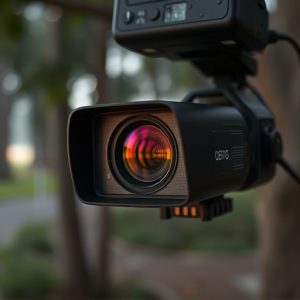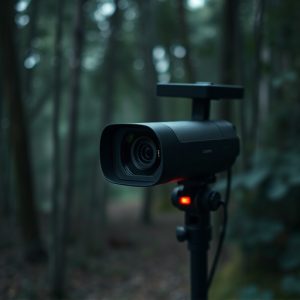Uncover Hidden Nanny Cams: Detection Tips for Home Security
Nanny cams enhance home security and child monitoring, but require strategic placement and understan…….
Nanny cams enhance home security and child monitoring, but require strategic placement and understanding of their technology. Homeowners should check for unusual wireless signals, scan for unauthorized Wi-Fi devices, and analyze internet data usage patterns. Effective Nanny Cam Placement Tips involve hiding cameras in discrete locations like inside cabinets or behind decorative pieces. When choosing between wireless and wired systems, consider potential electromagnetic signal detection and installation complexity. Detecting hidden monitoring devices requires tuning into specific RF bands (300 MHz – 2.4 GHz) with specialized detectors or simple radio receivers, along with visual inspections for subtle clues.
Uncover the secrets of hidden monitoring device signal detection with our comprehensive guide. In today’s digital age, understanding nanny cam technology is essential for ensuring home security. This article delves into the intricacies of various monitoring devices and their signals, offering valuable insights on optimal placement strategies.
From identifying common frequencies to advanced detection methods, we explore techniques to maximize signal strength. Learn best practices for strategic camera positioning and discover innovative tips to avoid detection, ensuring your home remains a safe haven.
- Understanding Nanny Cam Technology and its Signal
- – Types of monitoring devices and their signals
- – Common frequencies and detection methods
Understanding Nanny Cam Technology and its Signal
Nanny cams, also known as hidden cameras, are a common tool for monitoring home activities, especially when parents want to ensure their children’s safety while at home or when hiring a nanny. Understanding how these devices work and their signal patterns is crucial for effective use and detection. The first step in Nanny Cam Placement Tips Home is to familiarize yourself with the technology. These cameras often come with infrared capabilities, allowing them to capture video even in low-light conditions, making them ideal for covert monitoring. They transmit signals wirelessly or via a cable to a recording device or a smartphone app, ensuring real-time or recorded access.
The signal detection process involves recognizing peculiar wireless emissions or unusual activity on your home network. Common methods include using signal detectors designed to pick up hidden camera signals, scanning for unauthorized Wi-Fi devices, and checking for irregular data usage patterns on your internet bill. Proper Nanny Cam Placement Tips Home also involve strategic positioning of the cameras. Placing them in obvious locations, such as hallways or living rooms, might deter potential intruders or mischievous household members. However, the most effective use is to install them in areas that provide comprehensive coverage without raising suspicion, like inside cabinets or behind decorative pieces.
– Types of monitoring devices and their signals
In today’s digital age, monitoring devices like Nanny Cams have become essential tools for homeowners seeking peace of mind. These discrete cameras offer a range of options tailored to specific needs. For instance, hidden camera systems designed for homes often come in various forms, from small, compact units resembling everyday objects like smoke detectors or light bulbs, to more advanced models disguised as mirrors or electrical outlets. Each type emits unique signals, making detection a key consideration when installing these devices.
Effective Nanny Cam Placement Tips Home involve understanding the signal types and their characteristics. Wireless cameras, for instance, transmit video and audio data via radio waves, allowing for easy setup but potentially leaving a trail of electromagnetic signals that can be detected by specialized equipment. On the other hand, wired systems utilize physical cables to transmit footage, rendering them less susceptible to interference but requiring more meticulous installation. Knowing these differences is crucial when choosing the right monitoring solution and determining optimal placement strategies.
– Common frequencies and detection methods
In terms of hidden monitoring device signal detection, understanding common frequencies and effective detection methods is paramount. One of the primary strategies involves tuning into specific radio frequency (RF) bands known to be commonly used by nanny cams and other hidden surveillance equipment. Frequencies ranging from 300 MHz to 2.4 GHz are particularly prevalent, as these ranges are accessible and widely utilized for various devices. To detect signals within this range, users can employ specialized RF detectors or even simple radio receivers capable of scanning the spectrum.
Additionally, Nanny Cam Placement Tips for Home security enthusiasts suggest exploring visual cues and anomalies. Devices often emit subtle glows or interference on nearby screens when active. Moreover, analyzing power outlets and electrical wiring can provide clues, as hidden cameras may draw power from unseen sources. These tips, combined with RF detection methods, create a robust strategy for identifying and neutralizing hidden monitoring devices within the home environment.
When it comes to Nanny Cam Placement Tips for your home, understanding the technology behind these hidden monitoring devices is key. By recognizing different types of signals, their common frequencies, and available detection methods, you can ensure optimal positioning for effective surveillance. Stay ahead of potential intruders by arming yourself with this knowledge – your peace of mind is worth it.


